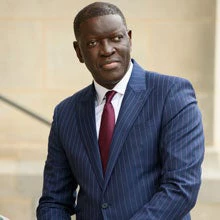 Anticorruption sign in Namibia. Photo: Philip Schuler / World Bank
Anticorruption sign in Namibia. Photo: Philip Schuler / World Bank
Last week, I had the honor of speaking at the 20th International Anti-Corruption Conference (IACC) on a panel focused on the global response to corruption. Indeed, one of the key themes of the conference was that corruption is a more global issue and collective problem for the world than ever before. Corruption is also a serious challenge to development. In his remarks at the IACC’s opening plenary, World Bank Group President David Malpass described the negative effects in stark terms:
“Corruption presents a major threat to economic growth and democratic stability around the globe. It steals from the poor and erodes progress. It affects almost all countries and brings with it a pernicious effect on investment and governance. It drains scarce resources and undermines public trust.”
It was not always the case that a President of the World Bank Group would speak so directly on the topic of corruption. Since the mid-1990’s, when former President Jim Wolfensohn called out the “cancer of corruption,” the World Bank Group and our peer multilateral development banks have significantly evolved in our approach to corruption. Our institutions are unequivocal in our believe that there is no place in development for corruption.
International Anticorruption Day 2022
But today’s corruption challenges are less about the ill-gotten gains of individuals, and more about how new technology, legal loopholes, complex financial systems, and transnational actors contribute to a system that allows corruption to be perpetuated. When corruption is allowed to persist, it negatively impacts society–from distorting markets, to driving inequality, undermining trust in institutions and the rule of law, and creating conditions that can lead to fragility, conflict, and violence. These are among the costs of corruption to society, above and beyond the amount of any bribe.
The World Bank Group has robust mechanisms for managing corruption risks at the project level, the country level, and the global level. First, at the project level, where the World Bank Group is putting its funding, there are a number of policies and safeguards in place to ensure there is accountability over these resources. We have clear procurement standards for each contract funded by our institution and strict financial management standards that borrowers much comply with. In addition, all World Bank Group funded projects are subject to procurement review and audits to ensure that our standards are being met.
There is also the detection function for our institution, which is housed in the Integrity Vice Presidency (INT). Anyone who has a fraud or corruption concern involving World Bank Group funds can report it directly to INT—including anonymously. INT receives more than 3,000 complaints each year and its staff review each of them, acting on fraud and corruption allegations while referring those serious issues that may fall outside its jurisdiction. If INT’s investigators conclude prohibited misconduct has occurred, the World Bank Group can leverage another of its tools for deterring corruption: sanctions. Since its current sanctions system was established in 2007, the World Bank Group has sanctioned some 800 entities. On top of this, many of these sanctions qualify for cross-debarment with our peer multilateral development banks (MDB). This arrangement, in effect since 2010, helps ensure that bad actors cannot negatively impact development projects further, regardless of who is financing them.
Second, the World Bank’s Governance Global Practice leads on support to client countries to build institutions for controlling corruption. Corruption thrives where there are weak institutions and when trust in society has eroded, which is why a strong focus on good governance and capable institutions is an important pillar of our anticorruption efforts. Governance is now embedded in World Bank Group priorities, including, for example, in the most recent replenishment of the International Development Association (IDA). This $93 billion financing package for the poorest countries includes a commitment to help IDA countries a tackle corruption, money laundering, and tax evasion to reduce illicit financial flows. Much of this work will focus on building capacity of institutions so that they can drive accountability.
Third, at the global level, the World Bank Group is actively engaged with partners to share knowledge and experience, help shape policy dialogues around corruption, and when necessary, cooperate in ways that strengthen our collective efforts to hold bad actors to account. For example, the World Bank and the United Nations Office on Drugs and Crime have partnered since 2007 on the Stolen Asset Recovery (StAR) Initiative, which supports international efforts to deny safe havens for corrupt funds and facilitate more systematic and timely return of proceeds of corruption through technical assistance and policy support. The World Bank Group’s INT also coordinates closely with our peer MDB integrity offices, to harmonize our approaches, share information, strengthen our sanctions regimes, and work to ensure that the sum of our efforts is greater than our respective parts.
The cancer of corruption may never be fully eliminated. But the World Bank Group, its Integrity Vice Presidency, and the many partners who joined us in attending the IACC, will continue our work to help bring greater accountability, transparency, and integrity for all.


Join the Conversation